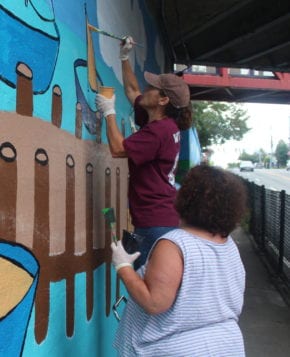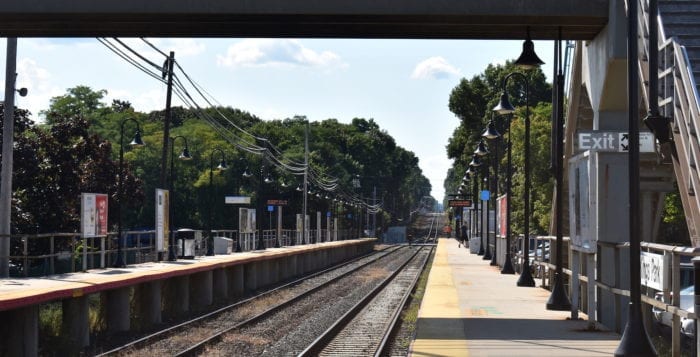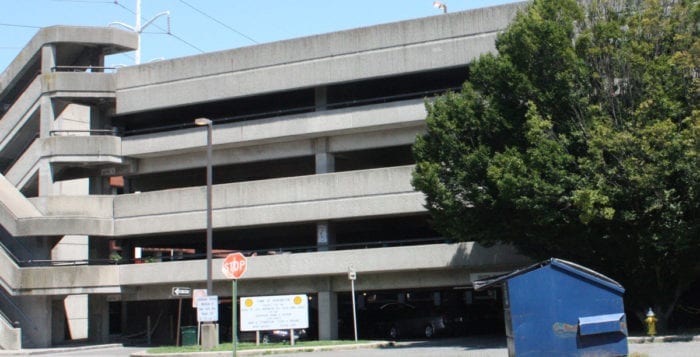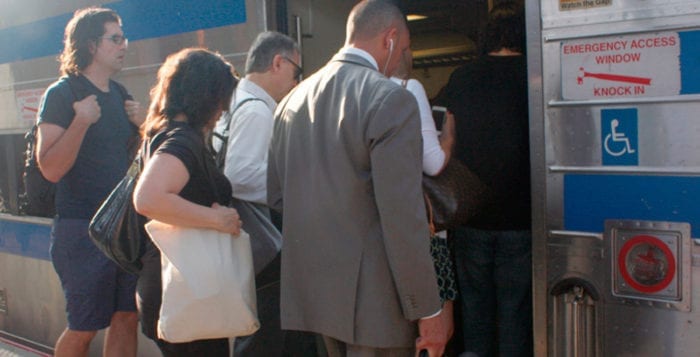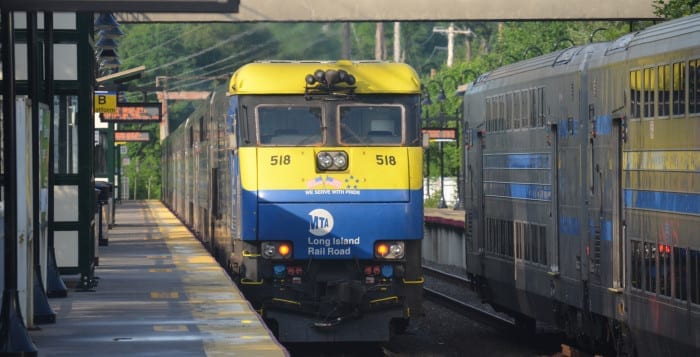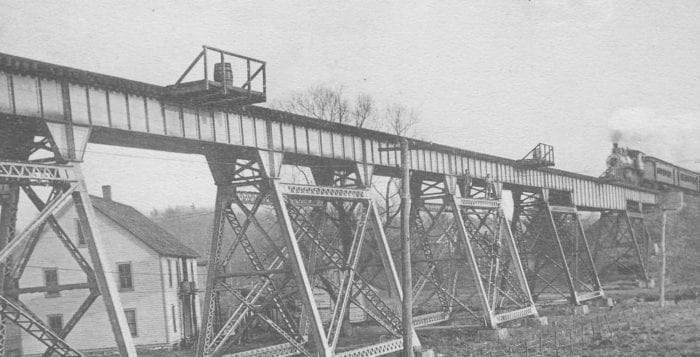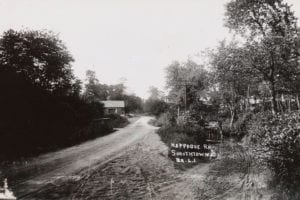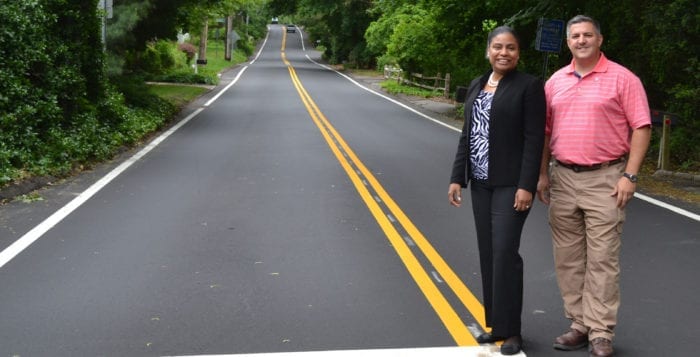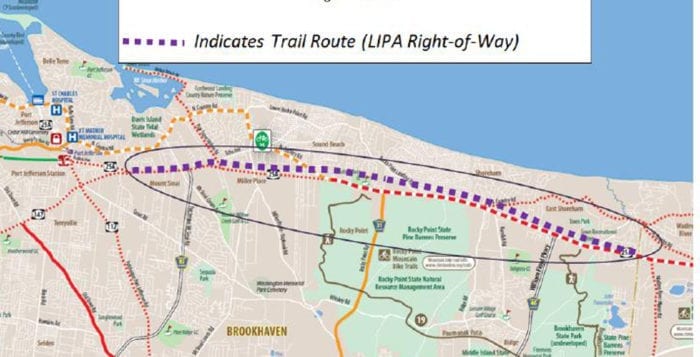Huntington’s commuters are being enticed to stop and appreciate the beautiful aspects of their hometown each day as they pass under the Long Island Rail Road tracks.
Dozens of parents, teachers and students in South Huntington’s Birchwood Intermediate School community have spent hours this August transforming the railroad and pedestrian overpass on Route 110/New York Avenue into a bright, colorful community mural.
“This is the hub of the community, it bridges Huntington and South Huntington,” said Annie Michaelian, former assistant principal at Birchwood. “We felt it would be a nice place to set a gift of beautification.”
“It’s an opportunity you get once in a lifetime to do it together as a community.”
— Annie Michaelian
Barbara Wright, a fifth-grade teacher at Birchwood, said she proposed the idea to the School-Based Management Committee in March as a way of giving back to the community. Wright had previously done a similar — but much smaller, she stressed — mural with her Girl Scout Brownie troop in Blue Point. Michaelian said after mulling the idea over, she was on board.
“It’s an opportunity you get once in a lifetime to do it together as a community,” she said.
School officials reached out to the Town of Huntington, gaining the support of Supervisor Chad Lupinacci (R) for the project as it gained momentum. Next, the SBM committee held a meeting with LIRR representatives in late June, as the organization owns the railroad and pedestrian overpasses, according to Michaelian, to get full approval for the mural before going full steam ahead.
Wright had Birchwood students, like 11-year-old Danny Ryan, draw and sketch out what the mural should represent.
“We tried to think of the beautiful side of Huntington and come up with ideas, then put them together into the mural.”
— Danny Ryan
“We tried to think of the beautiful side of Huntington and come up with ideas, then put them together into the mural,” Danny said.
Area residents should be able to easily identify some of the iconic landmarks painted on the overpass including the Huntington Lighthouse and the southwest entrance to Heckscher Park, and a stylized version of the park’s fountains and bridges.
“Everything that you see, all of the elements were drawn by the kids,” Wright said. “I can tell you the kid who drew that flower, that boat, that lighthouse.”
Once the individual drawings were photoshopped together into the mural, it became a matter of finding volunteers to execute the vision, and so a signup form was put on the school’s website. Aboff’s Paints in Huntington donated all the paint, brushes, rollers and supplies needed, according to the assistant principal.
“There was an outpouring of people who wanted to help,” Michaelian said. “Community members have been driving by, beeping and saying they love it. It’s become this beautiful thing.”
“That’s what we try to teach the kids all the time: You come to school to learn, but you are also part of a bigger thing, part of your community, of your state and your country.”
— Anthony Ciccarelli
Wright and her husband, Paul, began placing outlines of the children’s drawings up on the overpass tunnels the first weekend of August, with rotating shifts of volunteers picking up the paintbrushes each Saturday from 9 a.m. to noon. Dozens of children and their parents have come down to paint and bring life to their drawings.
“They are taking complete ownership,” she said. “They are so committed.”
During Labor Day weekend, Birchwood Principal Anthony Ciccarelli could be found rolling out a blue sky on the western wall of the overpass to serve as a backdrop to an airplane.
“You are so proud of the whole school community for coming together, first for thinking of the idea and thinking of the community and, second, thinking of how to better your community,” Ciccarelli said. “That’s what we try to teach the kids all the time: You come to school to learn, but you are also part of a bigger thing, part of your community, of your state and your country.”
The committee hopes to have the mural finished for a grand unveiling during the annual Unity in the Community parade — Huntington Awareness Day scheduled for Sept. 22. Even so, its student creators hope the mural is a gift that continues to give and grow with the community.
“Maybe, hopefully, people will continue to add new things to it in the future,” Danny said.



